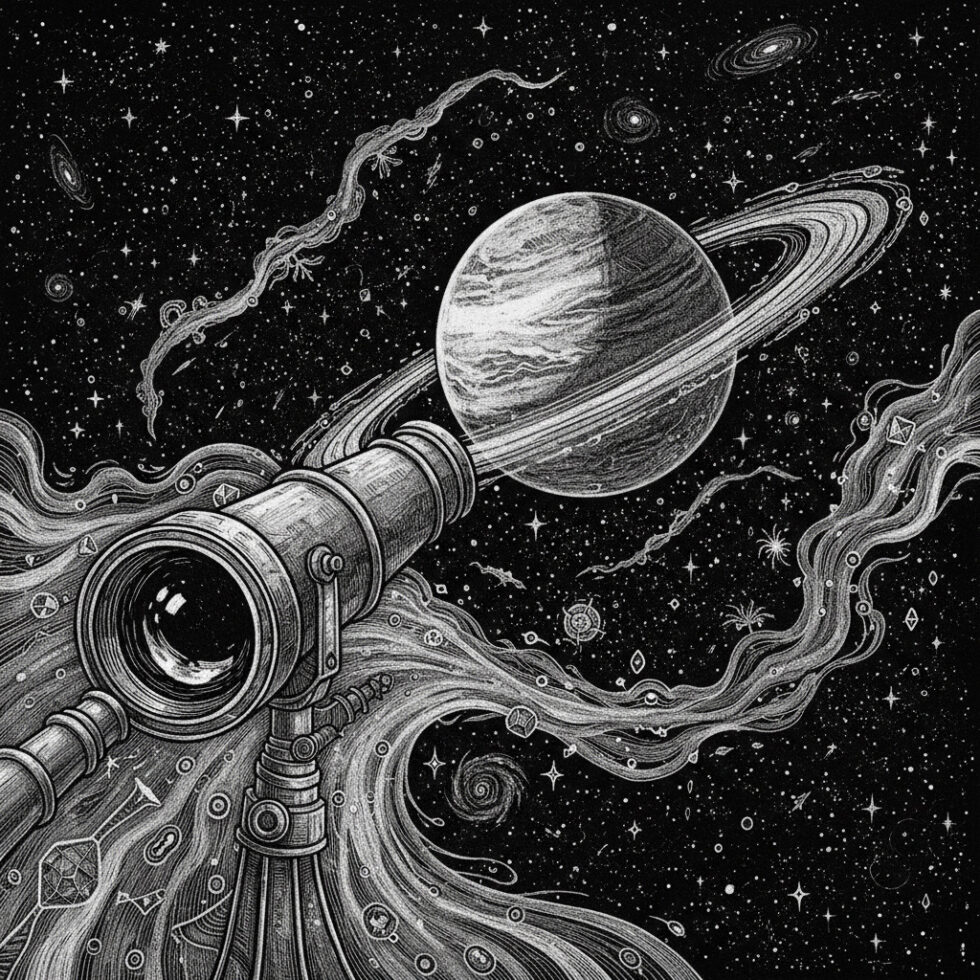
For decades, the hunt for planets beyond our Solar System centered on one question: how many are out there? That question is now answered in broad strokes. Thousands of exoplanets are confirmed. The next frontier is deeper and more intimate: what are these worlds like? Do they have clouds? Hazes? Water vapor? Methane? Carbon dioxide? With the James Webb Space Telescope (JWST), scientists are finally reading the chemistry of alien atmospheres with a clarity that felt impossible even five years ago.
This article is a guided tour of what makes exoplanet atmospheres such a rich target, how astronomers actually measure the air of worlds we cannot see directly, what JWST has already revealed, and what to expect from upcoming missions. We’ll also show you how to interpret headlines with a critical eye and where to explore the data yourself.
Why Atmospheres Are the Main Story Now
Atmospheres are the living interface between a planet and the cosmos. They tell us how a world formed, how it has evolved, and whether it might be comfortable for life. Even without finding life, air chemistry can answer big questions.
- Formation clues: Ratios of elements like carbon, oxygen, and metals (in astronomy, “metals” means anything heavier than helium) hint at where in a protoplanetary disk a planet was born and how it migrated.
- Climate and weather: Clouds, haze, and day–night temperature contrasts sketch a planet’s climate engine, including winds and heat circulation.
- Diversity of worlds: From “hot Jupiters” broiling close to their stars to sub-Neptunes with puffy envelopes, atmospheric signatures carve exoplanets into meaningful categories.
In the past, we had basic stats: planet size, mass, and orbit. Now, with atmospheric spectra, we get fingerprints of molecules and aerosols. Those fingerprints turn numbers into stories.
How We Read Alien Air
Because exoplanets are faint next to their stars, astronomers use clever geometry and timing instead of direct snapshots. Three techniques dominate atmospheric studies today.
Transit spectroscopy: reading starlight through a thin lens of air
When a planet passes in front of its star, a sliver of starlight filters through the planet’s atmosphere. Atoms and molecules absorb specific colors. By measuring the star’s spectrum during the transit and comparing it to when no transit occurs, astronomers see small dips at those telltale colors. That’s a transmission spectrum.
It’s akin to holding a leaf up to the sun and seeing which colors the leaf blocks. The depth of the “blocked” colors tells you what’s in the leaf—except here, it’s alien air.
Eclipse and emission spectroscopy: watching the planet’s own glow
When the planet ducks behind its star (a secondary eclipse), we temporarily lose the planet’s thermal glow and reflected light. The difference before and during the eclipse gives us the planet’s own spectrum. This “emission spectrum” reveals temperature at different altitudes, clouds, and molecules that radiate in the infrared.
For very hot worlds, this technique is powerful. It can even map how temperature changes from the blistering day side to the night side via phase curves—measuring the planet’s brightness as it orbits.
Direct imaging: blocking the star to see the planet
For a few wide-orbit giants, telescopes use coronagraphs to block the star’s light and pick out the planet directly. This yields spectra for young, self-luminous planets. Direct imaging will grow more capable with next-generation telescopes, but for now, transits and eclipses are the workhorses.
What JWST Changed
JWST brought two crucial improvements. First, wavelength coverage from the near-infrared to the mid-infrared, where molecules like water, carbon dioxide, methane, and sulfur compounds have strong signatures. Second, stability and sensitivity that turn tiny spectral wiggles into reliable chemistry.
Instruments that matter, in simple terms
- NIRISS and NIRSpec: Near-infrared spectrographs ideal for water vapor, methane, and carbon monoxide. They catch fine details in the 1–5 micron range.
- MIRI: The mid-infrared instrument that probes carbon dioxide, sulfur dioxide, and warm dust-like hazes in the 5–12+ micron range. It also helps map temperature structures.
These instruments don’t just see “something.” They see which molecules are present, sometimes at parts-per-million levels.
First wave results: chemistry in high definition
JWST’s early observations delivered headline moments and, more importantly, a baseline for systematic studies.
- Clear carbon dioxide in WASP‑39 b: JWST reported a crisp CO2 signal in the warm giant WASP‑39 b, a textbook demonstration that the telescope can untangle major molecules. Additional data revealed sulfur dioxide, indicating active photochemistry—starlight driving new compounds in the upper atmosphere.
- Hints of methane on K2‑18 b: Observations of this sub-Neptune showed methane and carbon dioxide with a lack of ammonia, setting the stage for discussions about “hycean” (hydrogen-rich, potentially ocean-bearing) worlds. Claims of exotic molecules remain tentative; what’s firm is that JWST can characterize sub-Neptunes that were previously enigmatic.
- Clouds and hazes are common: Many atmospheres show muted spectral features, not because the molecules are absent, but because layers of aerosols flatten the signal. JWST can see past some of this, especially with mid-infrared views that are less affected by haze.
The bigger story: JWST moved atmospheric science from sparse hints to multi-molecule, multi-wavelength profiles that can be compared across planets. That sets up population-level insights, not just one-off curiosities.
Small Rocky Planets Are a Hard Mode
If your heart is set on Earth-like planets, JWST is trying—but nature hasn’t made it easy. The TRAPPIST‑1 system, with several Earth-sized planets, is a prime target. Early JWST observations have largely ruled out thick, puffy atmospheres for the innermost worlds. That’s important. It suggests that intense stellar radiation can strip or sculpt air on tiny close-in planets.
The challenge is a double whammy: small planets have tiny atmospheres compared to giants, and their cool, active stars can introduce “stellar contamination” from spots and faculae, which mimics or masks atmospheric signals. JWST can nibble at these problems, but fully decoding rocky atmospheres will likely require longer campaigns and new instruments designed to suppress the star even more.
Beyond Equilibrium: Real Planets Don’t Sit Still
Early exoplanet models assumed chemical equilibrium: reactions had time to settle. But planets are bathed in ultraviolet light, and their air circulates. JWST’s data makes it plain—disequilibrium chemistry is common.
Photochemistry, aerosols, and strange sulfur
Sunlight breaks apart molecules and triggers chains of reactions that produce new species. In WASP‑39 b, the sulfur dioxide detection is a smoking gun for this process. Aerosols, which can be more like smog than clouds, form from these chemical pathways. They alter the way heat is absorbed and radiated, creating feedback loops in the climate.
Metallicity and carbon–oxygen ratios
A planet’s “metallicity” is the overall abundance of heavy elements compared to hydrogen and helium. It offers a window into formation. Some warm Neptunes appear to be metal-rich, while many hot Jupiters have metallicities closer to or modestly above their stars’. The carbon-to-oxygen (C/O) ratio is also revealing: higher C/O can mean a world formed beyond the water-ice line and accreted more carbon-rich gas; lower C/O suggests more oxygen-rich solids mixed in. JWST observations now constrain these ratios with real precision for select planets.
The Retrieval Toolbox: Turning Light Into Numbers
Atmospheric “retrieval” is the process of inferring gas abundances, temperatures, and cloud properties from spectra. It blends physics, chemistry, and statistics. While the math is complex, the idea is straightforward: guess a set of atmospheric properties, simulate the expected spectrum, compare to the actual data, and adjust until the simulated spectrum matches. Repeat many times, carefully track uncertainties, and you have a result.
Open software and data you can explore
- Molecular databases: Projects like ExoMol provide the absorption fingerprints that retrieval codes need to match spectra.
- Retrieval codes: Packages such as TauREx and petitRADTRANS are used across the field. They’re open enough that motivated students can experiment with simplified use cases.
- JWST documentation: The instrument handbooks explain how spectra are calibrated and what each mode can and cannot do.
If you want to dip a toe in, start by looking at published spectra for familiar signatures like water vapor bands. With a bit of reading, you’ll notice patterns that recur across many worlds.
Ground Telescopes Are Part of the Story
JWST isn’t alone. High-resolution spectrographs on large ground-based telescopes complement space observations. By spreading light into extremely fine detail, these instruments can detect tiny Doppler shifts from winds and rotation in exoplanet atmospheres. Techniques like cross-correlation match observed spectra to templates of specific molecules, pulling faint signals out of noise.
When ground and space data are combined, we can compare global-scale information (JWST’s strength) with local dynamics and winds (a ground-based specialty). This synergy will grow as new 30–40 meter telescopes come online.
What’s Next: Missions and Methods
We’re moving from the “proof” phase to the “survey” phase. That means big, coordinated programs and a wider cast of targets.
- ESA’s ARIEL: Designed specifically for exoplanet atmospheres, ARIEL aims to observe hundreds of worlds with consistent methods. That will help reveal trends across different planet types, temperatures, and host stars.
- Nancy Grace Roman Space Telescope: Roman’s coronagraph technology will demo direct imaging of nearby giant planets and prepare the field for more ambitious missions that target Earth-like worlds.
- Extremely Large Telescopes: The next generation of ground observatories will bring more precise high-resolution spectroscopy, potentially probing smaller planets and even mapping winds across alien skies.
On the analysis side, retrieval models are adding more realistic physics, better cloud microphysics, and coupled chemistry–climate loops. The field is also moving toward standardized data pipelines and open benchmarks so different teams can compare results fairly.
How to Read Exoplanet Headlines Without Getting Fooled
When you see splashy claims about “ocean worlds” or “biosignatures,” pause and check a few basics:
- Detection vs. inference: A molecule can be detected directly (clear spectral features) or inferred through models. Both are useful, but direct detections are more robust.
- Significance and uncertainties: Look for how strong the signal is and whether different data reductions agree. Solid claims report uncertainties and independent cross-checks.
- Degeneracies: Aerosols, temperature gradients, and stellar activity can mimic or erase features. Good studies test alternate explanations.
- Consistency: Do multiple instruments, wavelengths, or teams find the same thing?
- Biosignature caution: No single molecule equals life. Context matters—planet type, star type, and the mix of detected gases all shape the story.
What This Means for the Big Questions
There is a reasonable, cautious path from chemistry to habitability clues. If surveys show that small, temperate planets often keep atmospheres despite stellar activity, our odds of finding intriguing worlds go up. If the chemistry of sub-Neptunes points toward mini‑oceans under hydrogen blankets, that expands where we might look for life’s chemistry, even if those worlds are not “Earth-like.” And if hot, puffy giants show vivid photochemistry, they become laboratories for atmospheric physics we can’t test on Earth.
In short, every spectrum is a new data point in a fast-growing map of planetary possibilities. The map is already showing features—cloudy bands here, sulfur chemistry there, methane patches elsewhere—that we couldn’t see before JWST.
Try This at Home: Follow an Observation From Sky to Spectrum
You can follow a JWST exoplanet observation as it moves through planning and analysis:
- Target selection: Teams pick planets with bright host stars and predictable transits.
- Instrument mode: Choose NIRISS/NIRSpec for near‑IR features, MIRI for mid‑IR chemistry, or both for a wide molecular sweep.
- Observation: The telescope records light curves and spectra across the transit or eclipse.
- Data reduction: Calibrate for detector quirks and remove stellar and instrumental trends.
- Retrieval: Fit models to the cleaned spectrum to estimate gases, temperatures, and clouds, with clear error bars.
The raw data and many processed products become public after proprietary periods. Curious readers can inspect plots in papers, browse instrument docs, and compare how different teams interpret the same dataset.
Five Fast Myths, Debunked
- Myth: “We can’t learn anything about planets we can’t see.”
Reality: Spectra from transits and eclipses reveal rich atmospheric details without images. - Myth: “Clouds ruin everything.”
Reality: Clouds complicate spectra, but mid‑IR observations and better models extract plenty of signals. - Myth: “A methane detection means biology.”
Reality: Methane can arise from many abiotic processes, especially on hydrogen-rich worlds. - Myth: “Only big planets are interesting.”
Reality: Sub‑Neptunes and mini‑Neptunes may be the most common planet type; understanding their air is essential. - Myth: “One telescope will answer everything.”
Reality: Space and ground missions are complementary; we need both for a complete picture.
Where Curiosity Meets Craft
Reading alien skies is equal parts wonder and workmanship. Spectra are beautiful—curves ribboned with dips and humps—but they’re also hard-won, governed by strict calibrations and careful statistics. That dual nature is why progress is real yet measured. Claims are tested, revised, and sometimes overturned as better data arrives. This is science at its best: open, iterative, and grounded.
Over the next decade, expect fewer “firsts” and more “patterns.” With hundreds of atmospheres observed in consistent ways, we’ll start to classify worlds not just by size and orbit but by climate archetype, chemical family, and cloud regime. When that happens, the question “How common is a world like ours?” will move from poetry toward numbers.
Summary:
- Exoplanet atmospheres reveal formation history, climate, and chemistry beyond what size and orbit can tell us.
- Transit, eclipse, and (to a lesser extent) direct imaging provide complementary ways to measure alien air.
- JWST’s near‑ to mid‑infrared coverage enables multi‑molecule detections like CO2, H2O, CH4, and SO2.
- Early JWST results confirm photochemistry, common aerosols, and new constraints on elemental ratios.
- Rocky planets are challenging due to small signals and stellar activity; progress is steady but slow.
- Open databases and retrieval codes let the community test models and compare results transparently.
- Future missions (ARIEL, Roman) and giant ground telescopes will expand surveys and add fine-grained dynamics.
- Read headlines carefully: distinguish direct detections from inferences, and watch for independent confirmation.
External References:
- NASA: Webb reveals an exoplanet atmosphere as never seen before (WASP‑39 b)
- ESA/Webb: Webb detects methane and carbon dioxide in the atmosphere of K2‑18 b
- JWST Documentation: NIRSpec
- JWST Documentation: MIRI
- ESA: ARIEL Mission
- NASA: Nancy Grace Roman Space Telescope
- ExoMol: Molecular line lists for exoplanet atmospheres
- petitRADTRANS: Radiative transfer for exoplanet atmospheres
- NASA JPL: Exoplanet Watch citizen science





